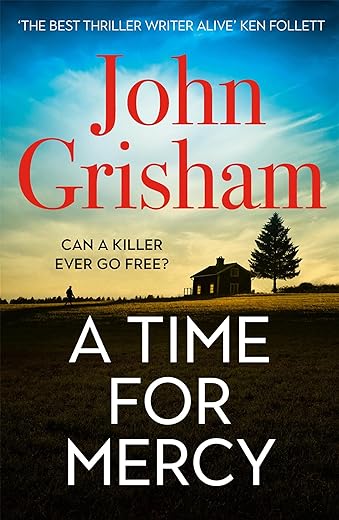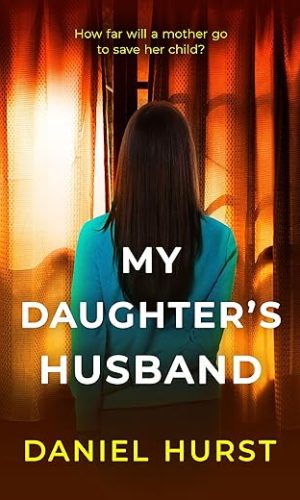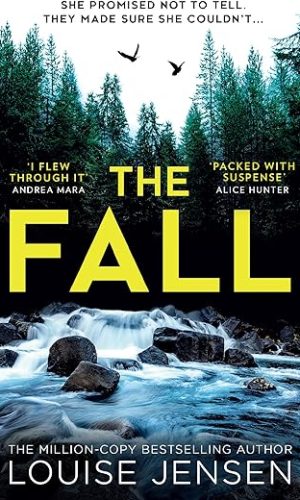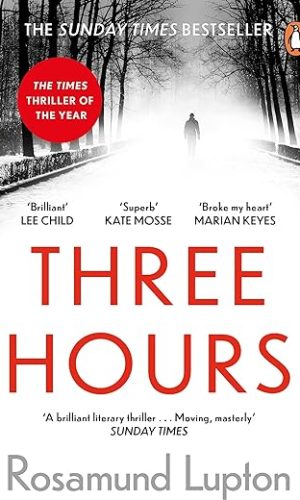A Time for Mercy: John Grisham’s No. 1 Bestseller
£4.70
***THE SUNDAY TIMES BESTSELLER***
Jake Brigance, lawyer hero of A Time to Kill and Sycamore Row, is back, in his toughest case ever.
‘A new Grisham legal thriller is always an event, but this one is exceptional as the author is returning to Jake Brigance, the hero of his very first book, A Time To Kill . . . There is a lot of Grisham in Brigance – they were both street lawyers on the side of the people, not big corporations. It gives the book an emotional core that burns with a white heat’ – Daily Mail
‘A master of plotting and pacing . . . suspenseful’ – New York Times
CAN A KILLER EVER BE ABOVE THE LAW?
Deputy Stuart Kofer is a protected man. Though he’s turned his drunken rages on his girlfriend, Josie, and her children many times before, the police code of silence has always shielded him.
But one night he goes too far, leaving Josie for dead on the floor before passing out. Her son, sixteen-year-old Drew, knows he only has this one chance to save them. He picks up a gun and takes the law into his own hands.
In Clanton, Mississippi, there is no one more hated than a cop killer – but a cop killer’s defence lawyer comes close. Jake Brigance doesn’t want this impossible case but he’s the only one with enough experience to defend the boy.
As the trial begins, it seems there is only one outcome: the gas chamber for Drew. But, as the town of Clanton discovers once again, when Jake Brigance takes on an impossible case, anything is possible …
Starring the same hero and setting that featured in John Grisham’s multi-million-selling bestsellers A Time to Kill (adapted as a film starring Samuel L. Jackson and Matthew McConaughey) and Sycamore Row, A Time for Mercy is an unforgettable thriller you won’t be able to put down.
‘When Grisham gets in the courtroom he lets rip, drawing scenes so real they’re not just alive, they’re pulsating’ Mirror
‘A superb, instinctive storyteller’ The Times
‘Storytelling genius … he is in a league of his own’ Daily Record
350+ million copies, 45 languages, 10 blockbuster films:
NO ONE WRITES DRAMA LIKE JOHN GRISHAM
Read more
Additional information
| Publisher | 1st edition (13 Oct. 2020), Hodder & Stoughton |
|---|---|
| Language | English |
| File size | 1233 KB |
| Text-to-Speech | Enabled |
| Screen Reader | Supported |
| Enhanced typesetting | Enabled |
| X-Ray | Enabled |
| Word Wise | Enabled |
| Sticky notes | On Kindle Scribe |
| Print length | 482 pages |









by Sue Joyce
I enjoy this book although I was disappointed with the ending as it was inconclusive and I always want to know the exact outcome of a story
by Ollie Cat
I thought there was too much padding at the start, the court case was good, but could have concluded with a proper verdict that would have solved other issues, the second case could also have been resolved with a little forethought and the book ended without leaving the reader with so much unfinished business.
by George Meldrum
Like all Grisham novels a great read .
by Kindle Customer
I liked the way Jakes personal and business lives interwove without too many others involved. I didn’t like leaving Drew in the air. What was his future. Jake Carla and Hanna have a happy ending but not the Gamble family
by welshsweetie
John Grisham does it again. Couldn’t put it down. Brilliant story telling with engaging characters both old friends and new.
by Doc Culbard
A Time for Mercy, published in late 2020, is the 37th, and latest, novel from the prolific pen of John Grisham (with another novel, Sooley, due for release in late 2021). Apart from his genuinely mature novels (which includes his one non-fiction novel, The Innocent Man), Grisham’s writing includes 7 additional novels written for younger readers, the Theodore Boone series, and several novellas (preludes, short stories and a short non-fiction thriller called The Tumour). Each of the novellas appear in Amazon’s Kindle Editions.
This reviewer has read all of John Grisham’s literary works, but, hopefully, my enthusiasm for the volume of his writing will not unduly influence my review of the merits of his latest to be read.
For many readers of fiction, a new John Grisham legal thriller is always an event, but this one is exceptional as the author is returning to Jake Brigance, the hero of his very first book, A Time to Kill. As the publicity material for the most recent novel states, “There is a lot of Grisham in Brigance – they were both street lawyers on the side of the people, not big corporations. It gives the book an emotional core that burns with a white heat”. So too, Grisham is “A master of plotting and pacing “, and A Time for Mercy is “suspenseful”.
The ending of A Time for Mercy may leave some readers wondering about Grisham’s approach in this story, But that merely adds to its development and intrigue. What is not in question is the fact that, once again, John Grisham demonstrates that he is a master story-teller – one who know the law and is experienced in its practice. As the publicity material for the book says, Grisham’s novel is pulsating, instinctive, pacey and tension -filled. The narrative shows a master at work, with short chapters that begin and end scenes, but never allows the reader to escape from what is being revealed.
The story is about the killing of Stuart Kofer, a police officer. Kofer, though a respected policeman amongst his peers, has a penchant for drunken brutality, and regularly practices his art on his partner, Josie. The effects of Kofer’s behavious are visited on Josie’s son, Drew, and her daughter, Kiera. As a family, they are in fear of their lives. One night, Kofer’s drunken brutality goes too far, leaving Josie for dead on the floor, before he passes out. Drew, Josie’s 16-year-old son, believing that he has only one chance to save his mother and sister, “picks up a gun and takes the law into his own hands.” The consequences of this action are revealed as the narrative unfolds.
It seems that there is only one lawyer in Clanton, a town in Ford County (see Grisham’s book of short stories of the same name), Mississippi, who has the experience to defend Drew – Jake Brigance (the lawyer figures in one of Grisham’s earliest novels, A Time to Kill – the reader will note the link in the titles of the two novels featuring Jake Brigance). Brigance enjoys a good reputation in Clanton and is well-liked. But no lawyer wants to defend a cop-killer. Brigance has little choice but to do so, and, as the “town of Clanton discovers once again, when Jake Brigance takes on an impossible case, anything is possible….”.
A Time for Mercy is quite a long novel, due mainly to the occasional reiteration of detail and the fact that Grisham fills out the description – both the physical and psychological natures – of his characters. The secondary characters in the story are also given their due place, and this helps both to make the story more human and interesting. The primary question that seems to be posed by the story is “Can a killer ever be above the law?”
The way in which Grisham deals with this question may cause a division of opinion in Grisham’s readership, perhaps giving an insight into the personal ideas and beliefs of the writer. That John Grisham can elucidate such thoughts and feelings in his 37th novel, is quite extraordinary, and expresses the quality and depth of the author’s background experience, imagination, and literary skills
There is no valid reason to deny John Grisham’s latest novel, A Time for Mercy, a typical high recommendation, and a 5* rating.
.
by O E J
John Grisham’s first novel, A Time to Kill, remains one of his best. That was about a man who, in 1985, killed someone but may have been justified in doing so. A Time for Mercy is about, er, a man who, in 1990, killed someone but may have been justified in doing so. Thankfully, that’s pretty much where the similarities end, but a story that invites the reader to make up his or her mind whether it was a righteous kill or not is always going to keep you turning the pages even after the story has ended.
It also invites the reader to wonder if the victim of the murder deserves such a retributory punishment for his wrong-doing, and whether his killer, likewise, deserves the ultimate judicial punishment for his wrong-doing.
Of course, cynics will argue that Grisham is capitalising on the civil unrest prevailing in America in 2020 but you can’t really blame him for feeding off it because it’s a subject close to many hearts and minds just now. Millions of people consider US police officers to be above the law if and when they kill, although the difference in this story is that the (white) police officer is off-duty when the horrifying assault takes place.
A Time for Mercy explores the ways in which acts of violence committed by or against law enforcement officers can complicate the pursuit of justice.
Jake Brigance is back, thereby making this a second sequel I suppose (after Sycamore Row in 2013), and he is appointed to represent a 16-year-old boy with regard to the murder of his mother’s boyfriend – who also happens to be a police officer. Just as in A Time to Kill, this isn’t about ‘who did it’ because everybody knows who the killer is. Once again the reader and all of the story’s characters face the ethical challenge over whether the killing was justified or not. Was it self defence? That’s just one of the counter-arguments. The young killer, his 14-year-old sister and his mother had lived in fear of the deceased policeman, who had a drink problem and would often physically and violently abuse them.
Opinion amongst the local community in Clanton, Mississippi, is weighted against Jake. Those with an affiliation to law enforcement believe the teenager should not only be tried in court as an adult, but if he’s found guilty, he should be executed. Quite a few ordinary citizens feel the same. Jake becomes very unpopular for defending a cop-killer, and while this is 1990 and long before the era of social media, there’s still a battle to be fought against those who decide that someone is guilty even before there’s a trial.
One of the intriguing things about this story – and the author is aware enough to mention it in the dialogue halfway through – is that there can be no satisfactory outcome. It’s a murder, and the killer is known. There will be a trial, and the jury will decide ‘guilty’ or ‘not guilty’. But unlike the first Grisham novel (in which just about everyone reading it hoped the killer would be found not guilty), in this case it’s not quite as simple. Any verdict could be wrong, even if you consider the possibilities in advance. So Grisham is creating a considerable problem for himself here, and it’s a testament to his skills as a story-teller that he is able to deliver a conundrum that feels very real (for all I know, this might be based on real-life events) and which seems impossible to resolve – yet resolve it he does.
Quite apart from this being a very good courtroom thriller with sharp dialogue and with engaging characters who you will either love or hate, at the heart of it all is the moral complexity that is generated by a murder of a local man who some will feel had it coming to him while others will feel lost his life unjustly.
With the exception of a few procedural elements this is never a boring read and is bound to pull on the emotions one way or another. I’ve read several Grisham novels over the past 20-odd years and while this may be a bit ‘familiar’ in places (in its style and structure), it’s still a fresh new read and compares well with most of this author’s best work.
* Edit/Update *
It’s hard to ignore an episode of ‘HOW TO GET AWAY WITH MURDER’ – Series 1, Ep 5 in fact – which was broadcast at least 5 years before this book by John Grisham was published. In that episode, called “We’re Not Friends”, the storyline has some rather uncomfortable similarities with this book.
To quote from the description on IMDB: “Annalise’s latest client is teenager Ryan Remini who has been accused of killing his father, a policeman who was also a drunk and abusive to his mother Sharon. Ryan doesn’t deny killing him and is in fact quite happy that he did it given the highly toxic home life he was forced to endure. Annalise realises that the only way they will win is to appeal to the jury’s emotions and so jury selection becomes the key factor to success.”
To be honest, I can’t help wondering if Grisham watched that episode back in 2014 or thereabouts and thought “Hmm, that’s an interesting idea. I could write a book about that”.
Maybe it’s nothing more than a coincidence – but the similarities are strong, it has to be said. Even the outcome of the TV drama is not very different from that of the novel. It would be disappointing if John Grisham plagiarised the work of Tracy A. Bellomo who wrote (or co-wrote) the stories for the entire 15 episodes of Series 1 of How to Get Away With Murder.